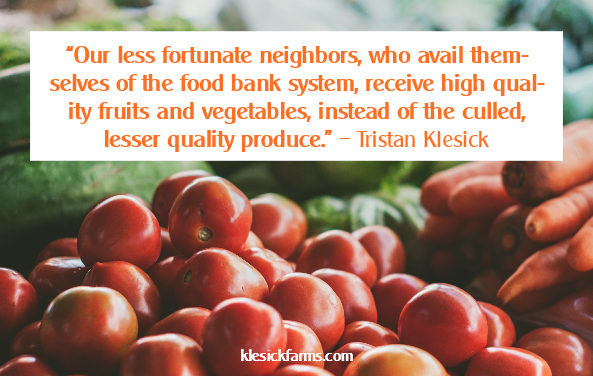What’s new is that it’s July and I am wondering what happened to June!? It looks like chilly June is going to carry over into July. Sorry tomatoes and peppers, maybe August will be your month!
After last year, I made a conscious decision to plant heat-loving crops early and take advantage of the changing climate. That decision has not worked out so well. The tomatoes and peppers look like they want to put on my wool sweater, but I am not giving up :).
Speaking of tomatoes, I planted 200 Early Girl/Stupice type red tomatoes. I got them all caged up and cleaned up and growing in the right direction and now there are a few starting to ripen, but they are ripening orange! I apparently transplanted orange tomatoes. They taste great, but that is not what I was expecting to grow.
For the last few months, I have been looking at those plants and wondering about them, I knew they were “setting” fruit differently, but with the cool, wet weather, I just chalked it up to climate change. So this year we are growing Klesick Farm’s tasty orange colored tomatoes. #ithappens #ohmy #atleasttheyarestilltomatoes
Another telltale sign indicating that I guessed wrong about the weather this season was the cucumbers. They were direct seeded in early May…and GERMINATED LAST WEEK! Seriously, that is a head-scratcher, but they are up and growing now. Thankfully, I planted some cucumbers in the greenhouses also, and they are happy – really happy. I mean, they are rivaling Jack-and-the-Bean-Stock happy. Long story short, cucumbers are going to be in the boxes of good food, picked daily and delivered daily.
This week we are putting a lot of Klesick Farms-harvested good food in the boxes. We use a KF next to items from our farm on the newsletter, and an * next to other local NW farms’ fruits and veggies. So this week, my crew and I are picking, packing and delivering chard, chives, zucchini, cucumbers, peas, lettuce and a few raspberries.
We are also getting cherries and carrots from two other organic growers that I have been working with since 1997! Those are some seriously long relationships. All of our customers – some since 1997 – have nourished their families with these farmers’ produce as well.
We are a different kind of food system; a more sustainable, more earth-friendly option – as we have been for the last two decades – helping families to eat better food and feel better about the food they eat.
Bon Appétit!
Farmer Tristan
Recipe: Indian Roasted Potato Salad with Chard
Serves 4-6
Ingredients:
1 ½ lbs. potatoes, halved and/or quartered
3 Tbs. extra-virgin olive oil
1 Tbs. ground turmeric
1 tsp. ground cumin
1 tsp. garlic powder
1 bunch chard, shredded (or cut into thin ribbons)
2 Tbs. Greek yogurt
2 Tbs. lemon juice (more if desired) salt and pepper
Directions:
1. Place the diced potatoes on a large baking sheet, covered in foil. Toss with 1 tablespoon oil, turmeric, cumin, garlic powder, salt and pepper. Slide into a 400°F oven and roast for 30-40 minutes, or until browned all over and tender, tossing halfway through.
2. In a small bowl, whisk together the yogurt, remaining oil, lemon juice, and a pinch of salt and pepper.
3. In a large bowl place the ribboned chard and roasted potatoes. Drizzle with the lemon dressing and toss to coat.
4. Serve garnished with fresh parsley or basil, if desired. Or even bacon bits!
Recipe from bevcooks.com
Know Your Produce: Chard
Chard has large, fleshy but tender deep green leaves and thick, crisp stalks. Although they’re unrelated, chard is similar to spinach, but with a stronger, more assertive (some think, bitter) flavour.
Different types of chard have different coloured stalks and ribs. Some stalks are white, some are a golden orange and some are red (called ruby or rhubarb chard) – there’s even rainbow chard. There’s very little difference in taste, but ruby and rhubarb chard can have a slightly stronger flavour.
Prepare: The leaf and the stalks should be cooked separately. Wash, then cut the stalks from the leaves and either leave whole or chop, depending upon your recipe. On some older leaves you may need to cut the ribs out of the leaves, too.
Cook: Leaves: boil (1-2 minutes); steam (3-4 minutes). Stems: stir-fry (around 2 minutes); boil (3-4 minutes); steam (4-5 minutes); roast (10 minutes).



